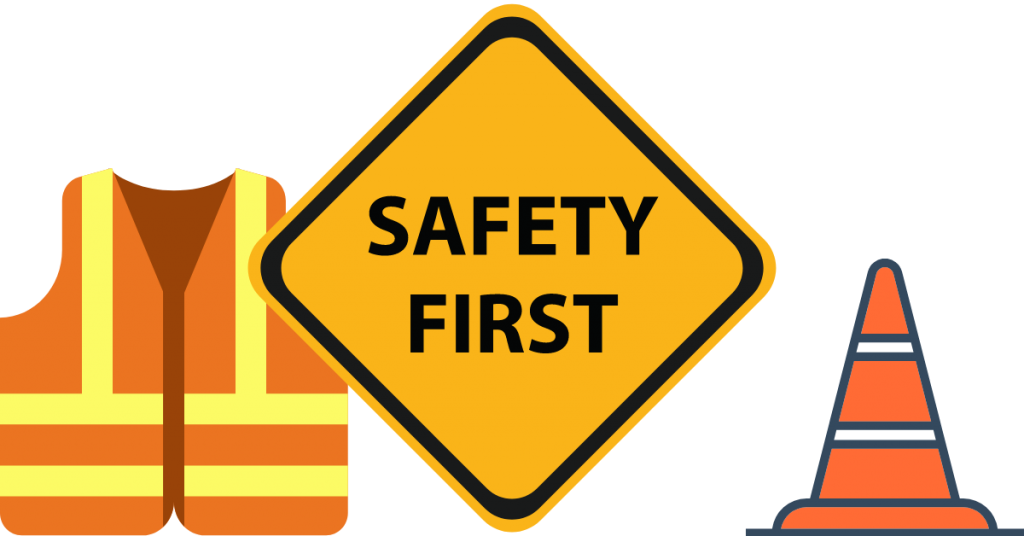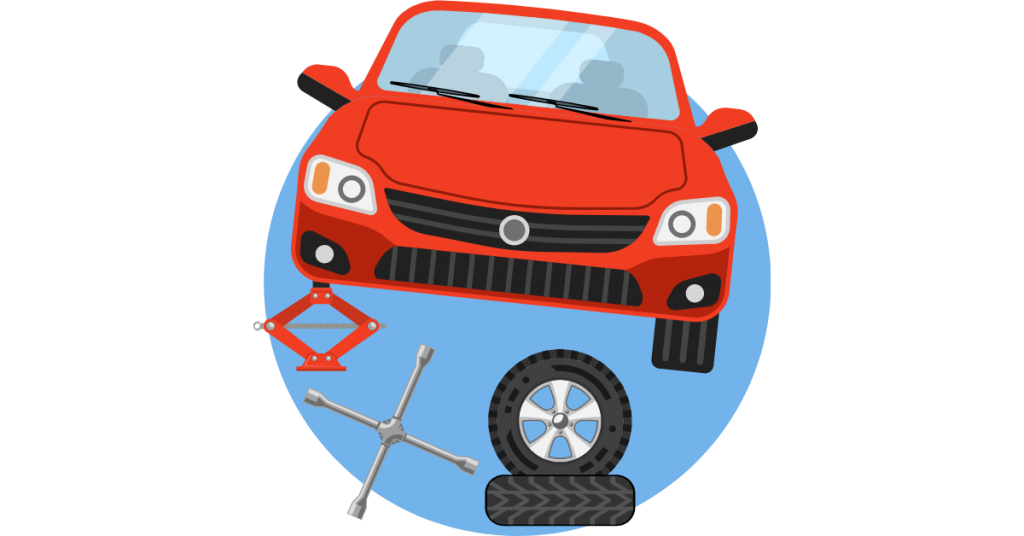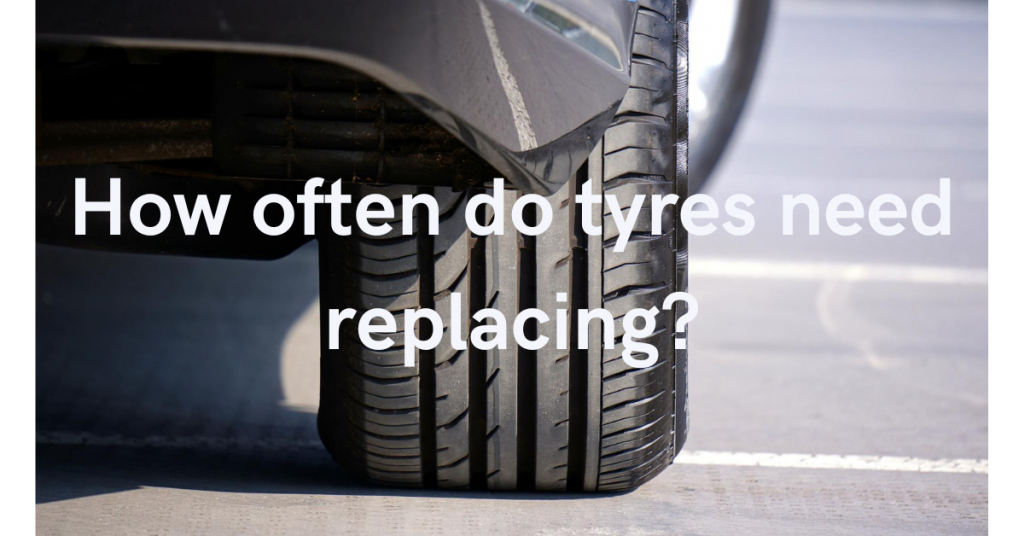You’re driving on the motorway, and all of a sudden your car starts veering to one side, what do you do?
Flat tires are caused by a number of things – hitting a pothole or kerb, where, e.g. there is a screw stuck in the tire, a leaking valve or even corrosion of the wheel rim itself. Some damage can not be repaired, e.g. when there’s a split in the tire sidewall.
Most of us cruise through life without ever getting a flat tire, however, some people are not that lucky. The main point to get across here is that you need to know what to do if it happens to you.
In this guide, we’ll walk through some steps you need to take when you notice you’ve got a flat tire, including changing a flat tire or fitting a new one. We’ll also provide additional advice to help minimize your chances of ending up with a flat tire.
As soon as you’re aware that you are driving with a flat tire, pull over to the side of the road if safe to do so. If you have a mini electric inflator (which plugs into the cigarette lighter socket) you can try to inflate the tire and if lucky, get yourself home. However, if you don’t have an electric inflator or air leaks too fast from the tire, then you can either call out a breakdown service or if you have a spare wheel, you could fit that. In some instances, a can of tire repair may also help and give you that extra bit of time to get home.
Lastly, if your vehicle is fitted with run-flat tires, you may be able to drive with the tire even though all the air is lost from it. Please refer to your vehicles user manual, or tire specifications to check the speed and distances that could be driven in such circumstances.
How to spot driving with a flat tire whilst on the road/motorway

In most cases, you are far more likely to get a flat tire from a slow puncture that results in a steady leak of air—rather than a sudden loss of air or burst. These slow punctures are very hard to notice by just walking past, or looking at the tire. Therefore, it can take drivers a few miles or more before even realizing that there is a puncture.
If one of the tires are slowly losing pressure, you will start to experience the car pulling to one side (the side the flat tire is on). You’ll also find it more difficult than usual to steer your vehicle while driving with a flat tire.
As this increasing lack of control over your vehicle presents a risk, you will need to come to a stop as safely and soon as possible.
Getting to safety

Realizing they are driving with a flat tire, some drivers will attempt to continue slowly along the hard shoulder in order to get to the nearest stop or service station. Unless your vehicle is fitted with run-flat tires, this is not an advisable move.
As some of us may have experienced,driving with a flat tire makes it extremely difficult to control your vehicle—putting not only you, but also other road users in danger. As a rule, you should not travel long distances on a flat tire, or at higher speeds.
What you need to do immediately is find a safe place to pull over as soon as possible. If you’re traveling on a dual carriageway or motorway, you can use the hard shoulder. Take great care and give other road users enough notice when maneuvering your car with a flat tire. If you’re on a minor road, try to pull over in a place where your vehicle have little chance of being an obstruction to oncoming traffic.
Once you have stopped, you’ll need to assess whether it is safe for you to change your flat tire. According to the Highway Code drivers should “only change the tire if you can do so without putting yourself or others at risk—otherwise call a breakdown service.”
Indeed, you should avoid changing your flat tire on the hard shoulder of a motorway or at the side of the road, as there is always a danger of oncoming traffic. If you’re driving at night, you should not risk changing a tire in the dark. Even with reflective clothing, oncoming traffic might find you hard to see, or notice you too late.
So, if you’re not entirely sure it’s safe enough for you to change your tire, call a breakdown service, such as the RAC or the AA in the UK. It’s always better to be safe than sorry!
Alternatively, if you are absolutely certain that you will not be getting in anyone’s way, you’re almost ready to change your tire, and we’ll move on to the next topic.
The right tools for the right job

Before starting the process of changing your flat tire, it is good practice to first check that you’ve got everything you need. After all, changing a tire is not an insignificant job and it does require a few important tools as well.
Your equipment checklist:
• Serviceable spare tire (pretty important hey?!)
• Car Jack
• Wheel chock (to prevent your car from rolling whilst changing the flat tire)
• Wheel wrench and a wheel nut key (if wheels are equipped with locking nuts)
• Vehicle handbook or guide to help determine where the car jack should be attached
• Set of gloves as your wheel will be dirty from driving and brake dust!
Additional items that you might need include a torch—if you absolutely need to change a flat tire at night—and a reflective jacket to ensure you’re as visible as possible to oncoming traffic.
For a very handy list of equipment to keep in your car, have a look at 33 Tools and accessories to keep in your car on the RAC website.
Now, if you don’t have the proper tools with you, or you’re in an unsafe place, you shouldn’t attempt to change your tire. Just call a breakdown service and they’ll carry or tow you and your car to safety, and help you with the tire.
How to change a flat tire (and rim) by the side of the road

- Stop and secure your vehicle – Once you’re confident of a safe place to pull over and change your flat tire, come to a stop and apply the handbrake. Select first gear (or P, if it’s an automatic car), and switch on your hazard lights and use an emergency light if you have one. Remember to turn off the engine.
It’s important that you’re on level ground, as your car is at risk of rolling if you’re on unequal ground. You then need to vacate all passengers from your vehicle and ensure they’re located at a safe distance away from both the road and vehicle.
If you’re trying to change your flat tire near a busy road, then you might want to put on a reflective jacket to ensure you’re completely visible to oncoming traffic. A reflective warning triangle should also be used to alert other road users that there’s a potential hazard or obstruction ahead. - Prevent your car from rolling – For obvious safety reasons, you need to avoid the possibility of your car rolling away whilst changing the tire. You’ll need wheel chocks to stop the car from rolling.
If you only have one chock, place it under the wheel that’s diagonally opposite to the one you’re replacing. If you have more chocks, these can be placed under the other wheels to further secure the vehicle. - Lifting the vehicle off the ground – Ensure first that you know where the dedicated jack points are for your vehicle – these can be found in your vehicles manual (or Google!).
These points vary depending on the vehicle, so be sure to check even if you’ve changed a tire before. Once you’re entirely sure where the jacking points are, it’s time to position the car jack to the closest point of the flat tire. Raise the car slowly until it’s around 10-15cm above the ground. - Loosen and remove wheel nuts – Now it’s time to get your wheel wrench and slowly start to loosen up the wheel nuts—you’ll want to turn them in an anti-clockwise direction.
Be aware, the nuts may be stuck and after lots of pressure suddenly give way, be prepared for this otherwise you may find yourself on your backside! Once you’ve removed the wheel nuts, you can then remove the flat tyre by pulling it slowly towards you.
Once removed, place the wheel flat on the ground. - Mount the spare wheel and lower the car – Once the flat tire is out of your way, it’s time to attach the spare tyre. Slide the spare wheel onto the hub bolts, pushing it in as far as possible.
Then, tighten the wheel nuts by hand. Next, lower the jack until the spare tire is in contact with the ground. Now use the wheel wrench to tighten the wheel nuts as much as possible. - Fully lower the car – After using the wrench to tighten the wheel nuts, lower the car fully to the ground, and remove the jack. At this stage, you may want to double-check the wheel nuts to ensure they’re all fastened tightly. Ensure you collect all equipment, tire and jack, and stow everything in the boot.
- Verify spare tire pressure – If available, use a tire pressure gauge to check that the spare tire is fully inflated to the appropriate pressure. Alternatively, carefully drive to the nearest service/petrol station and use the gauge there.
Ensure the tire is inflated to the recommended pressure as detailed in the handbook (sometimes a guide plate can be found inside of the drivers’ door frame). - Get punctured tire repaired – At the first opportunity, visit a garage or tire fitters for a consultation on the punctured wheel. They should advise whether the tire can be repaired or if it needs replacement.
Don’t drive on a ‘space-saver spare wheel for longer than is necessary – these wheels are only intended for emergencies.
Tips for good tire maintenance

Inspect your tires frequently
It is important to inspect your tires frequently. Taking the time to check your tires at least once a month is a good start in avoiding unnecessary flat tire on the motorway.. Examine each tire and inspect the tire tread carefully. Check for any sort of scrapes, cuts or foreign objects, e.g., nails or various debris.
If you do find something, and if it is an object that needs removing (e.g. screw/nail), pay attention and see if any air is escaping. In some cases it is best to leave a screw in and carefully drive to your nearest garage for repair. You will have to make a judgement depending on the situation, but rather find the leak whilst stationary than finding out whilst on the Motorway!
Check tire pressure frequently
Unfortunately, even a weekly inspection of your tires isn’t sufficient to help you avoid getting a flat tire whilst on the move. After all, if a puncture is small enough, you might not see it even on close inspection. You might therefore want to invest in a pressure gauge so that you can see if the tire’s pressure is at the recommended level. It’s quick to check, and it could help you save a lot of money and hassle further down the road (pun intended).
If you do check your tire pressure, you’ll want to wait until the tires have cooled down. Whilst driving, tires heat up, which can lead to inaccurate pressure gauge readings.
Finally, get a second opinion
If you’re not entirely sure what you should be looking for, or you suspect your tires aren’t in the best condition, you might want to take them in to a local garage and have an expert take a look. If you need to pay for replacement tires, it still is a better alternative to having your vehicle towed from a motorway.



